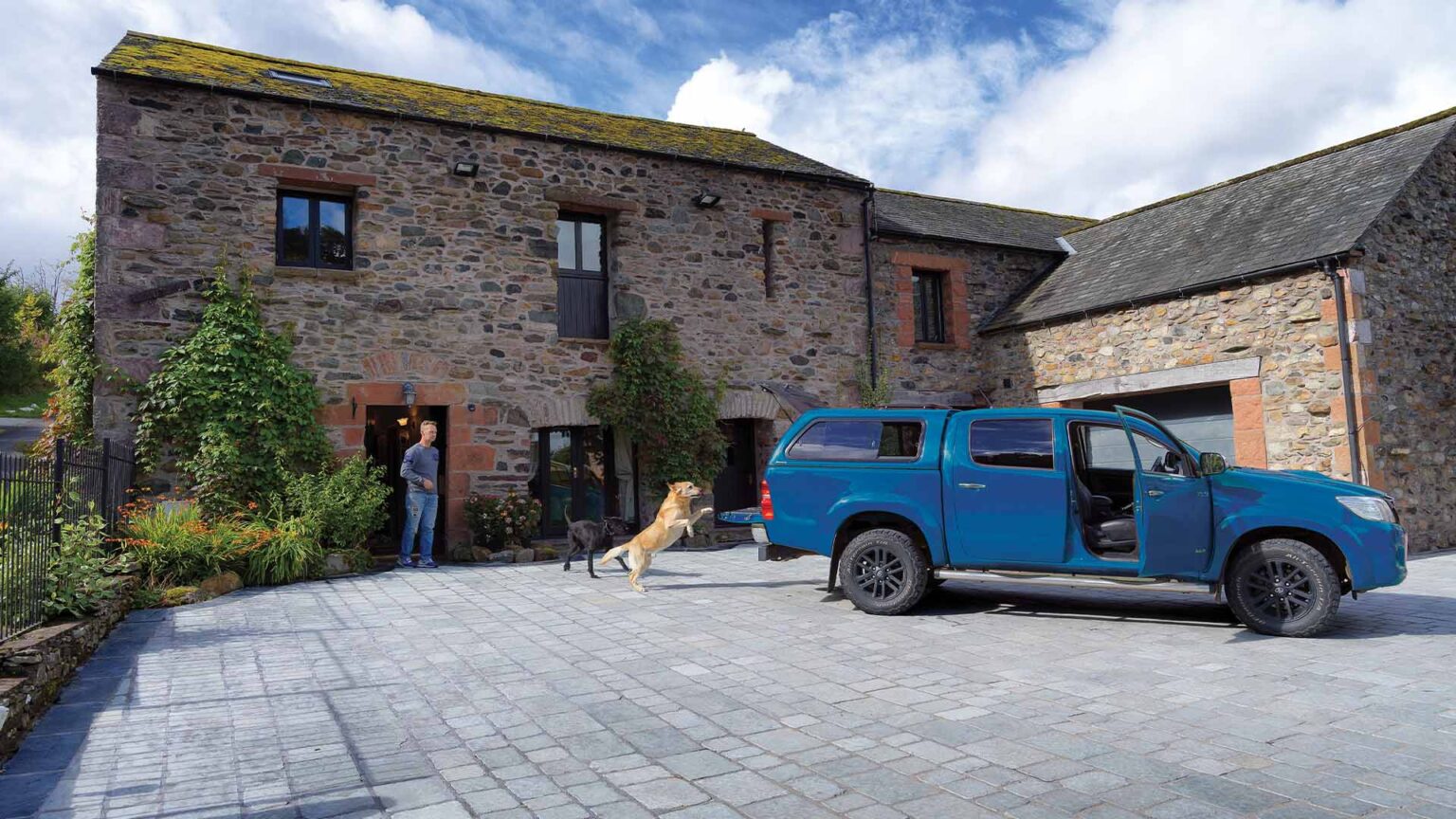
When considering improvements to your home, such as installing a new driveway or patio, it’s essential to understand the regulations surrounding drainage and water management. In the UK, the Sustainable Drainage Systems (SUDs) law plays a critical role in managing rainwater and reducing the risk of flooding.
One of the key changes SUDs introduced was the notion of capturing run-off water within the boundary of the property to prevent it flooding public drains.
If your new driveway or front garden paving exceeds 5m² in area, you will require a drainage solution to make sure all run-off water is captured on your property.
If you cannot capture the water within the boundary of the property, and the surface area is greater than 5m², you will need planning permission for your driveway area.
Let’s explore how these rules apply across England, Wales, Scotland, and Northern Ireland.
What is SUDs?
Sustainable Drainage Systems, or SUDs, are designed to manage surface water run-off in a way that mimics natural drainage. Instead of water flowing rapidly into drains and potentially causing flooding, SUDs encourage water to soak into the ground, be stored temporarily, or flow into natural watercourses. In this way, SUDs seeks to ensure that rainfall remain within the boundary of the property where it has fallen, and protect public drains from being overwhelmed, and flooded.
A fundamental principle of SUDs for domestic properties is that water run-off from new surfaces must be captured and managed within the bounds of the property. This means homeowners need to ensure that rainwater does not flow onto public roads or neighbouring properties, which could increase the risk of flooding elsewhere.
These approaches to rainfall and run-off water management aim to:
- Prevent flooding.
- Improve water quality.
- Enhance biodiversity and green spaces.
- Reduce pressure on traditional drainage systems.

General Driveway Drainage Advice
If your planned driveway is bigger than 5m², UK driveway drainage regulations require that rainwater that falls on your driveway is “captured” within the boundary of your property (unless you want to apply for planning permission to allow the run-off to enter public drains).
There are four options to tackle this rainwater capture requirement:
Permeable Paving – using paving that allows the rainwater to pass directly through or around it to soak into the ground under the driveway. This will typically will require the use of permeable jointing aggregate (3-5mm), permeable laying course material (2-6mm clean crushed stone/grit) and permeable sub-base material (e.g. MOT Type 3 SHW clause 805), which has reduced fines and will also allow water to drain through it. A permeable geotextile membrane between the substate and sub-base should also be used.
Soak-Away – using an underground soak-away crate, connected to drainage channels to capture rainwater within the boundary of your property. The soak-away crate must be located at least 5-metres from your home, and at least 2-metres from the property boundary. This solution is typically used with channel or slot drains that feed into the underground soak-away via a P-trap gully and underground pipes.
Garden Capture – using the gradient/fall of the driveway to direct surface water into permeable soak-away areas of the garden such as flower beds, lawns, garden borders, gravel traps or swales, where the rainwater can drain away naturally within your property.
Rainwater Harvesting – using an underground reservoir (connected to drainage channels), that has a pump connected to above-ground water-stowage (such as a water butt) so the captured water can be reused to water the garden.
Permeable Driveway Solutions
Permeable driveway paving blocks are specialised products that have been designed to allow water to drain through them to the ground beneath, so that rainwater is quickly and efficiently delt with.
These permeable blocks will need to be installed on a permeable laying course (2-6 mm permeable grit / clean crushed stone) and a permeable sub-base (e.g. MOT Type 3 SHW clause 805) that will allow free drainage. The blocks will need a permeable jointing aggregate too (2-5 mm). A permeable geotextile membrane should be used between the sub-base and substrate for the structural integrity of the sub-base (e.g. to prevent the sub-base from sinking into the underlying ground, keeping the sub-base material separate and, critically keep it clean and free of soil).
Permeable Concrete Block Paving
Permeable concrete block paving is a sustainable surface solution that supports effective stormwater management. Designed with gaps or fixed wider joints, it allows water to infiltrate the ground, reducing surface runoff and mitigating flood risks. Ideal for driveways, walkways, and parking areas, it enhances groundwater recharge and minimizes water pooling. Permeable paving also supports urban sustainability, as it can filter pollutants and reduce heat island effects. Durable and aesthetically versatile, it is a practical choice for eco-friendly construction projects.
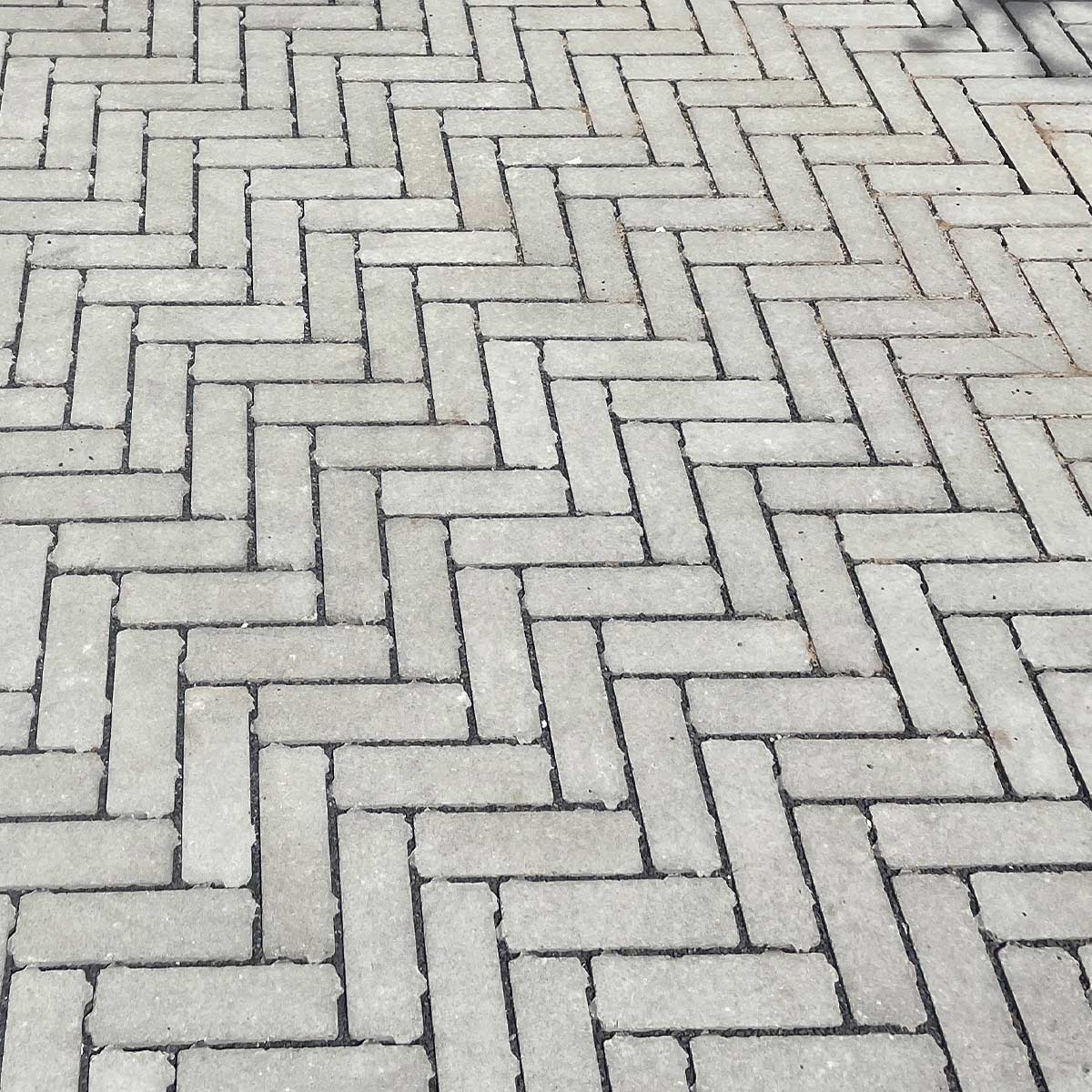
Permeable GrassPark Driveway Grids
Grasspark permeable driveway paving grid is an eco-friendly solution for sustainable landscaping and stormwater management. The grid are made of durable concrete blocks designed to reinforce grass or gravel surfaces while allowing water to seep into the ground. They prevent soil erosion, reduce runoff, and support groundwater recharge. Ideal for driveways, parking areas, and paths, they create a natural, green appearance while offering structural stability. Grasspark grids are low-maintenance, durable, and environmentally responsible, making them perfect for residential and commercial applications.
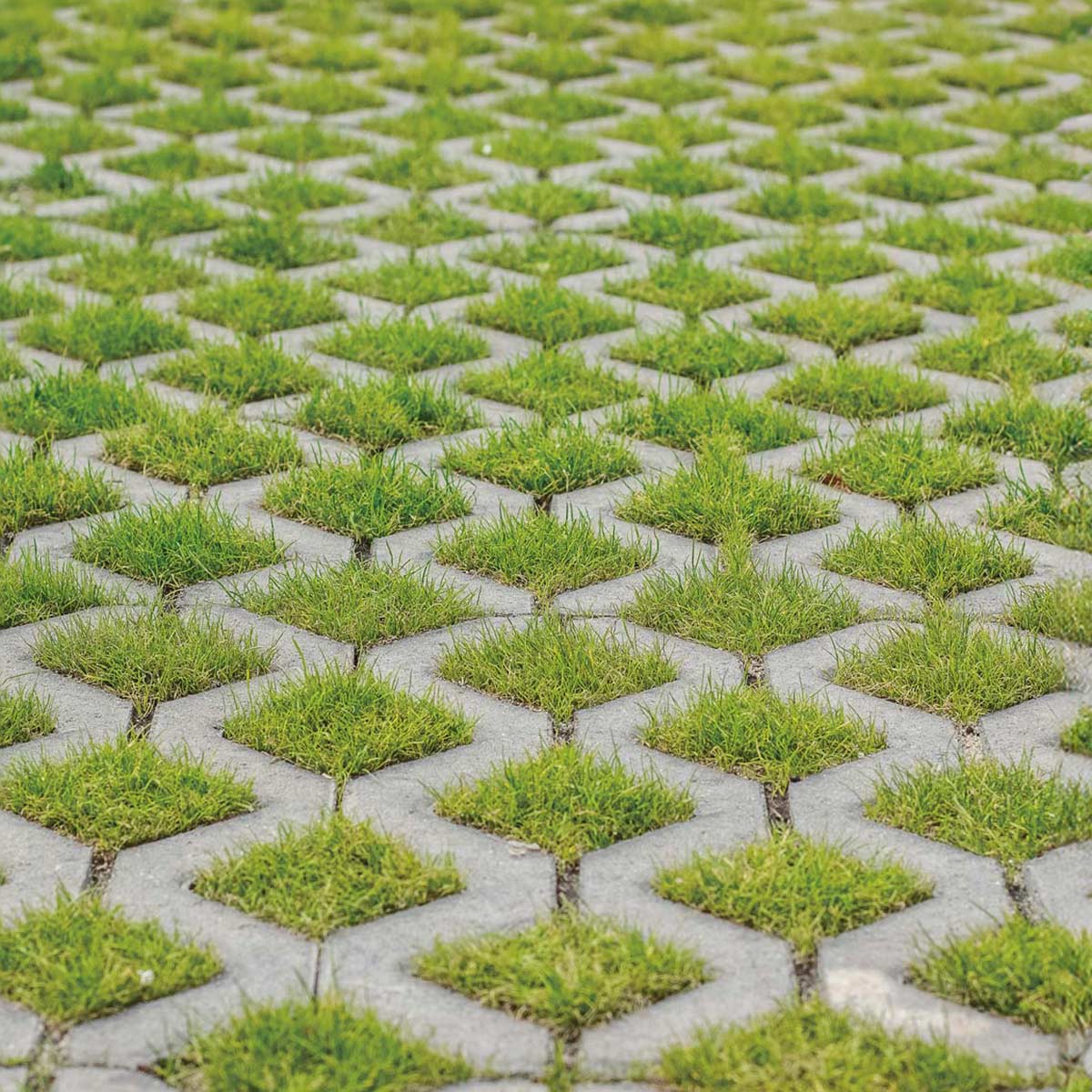
Permeable Decorative GrassPark Grids
Virage Decorative Permeable Grasspark Parking Grid combines functionality with striking aesthetics, offering swirl and pattern combinations that enhance any landscape. Designed for both durability and visual appeal, its unique patterns allow for creative configurations, allowing you make more interesting parking areas, pathways, and driveways. The grid supports grass growth while providing structural stability, ensuring a natural yet polished appearance. Its permeable design manages stormwater effectively, reducing runoff and promoting eco-friendliness, making it a sustainable and visually captivating paving solution.
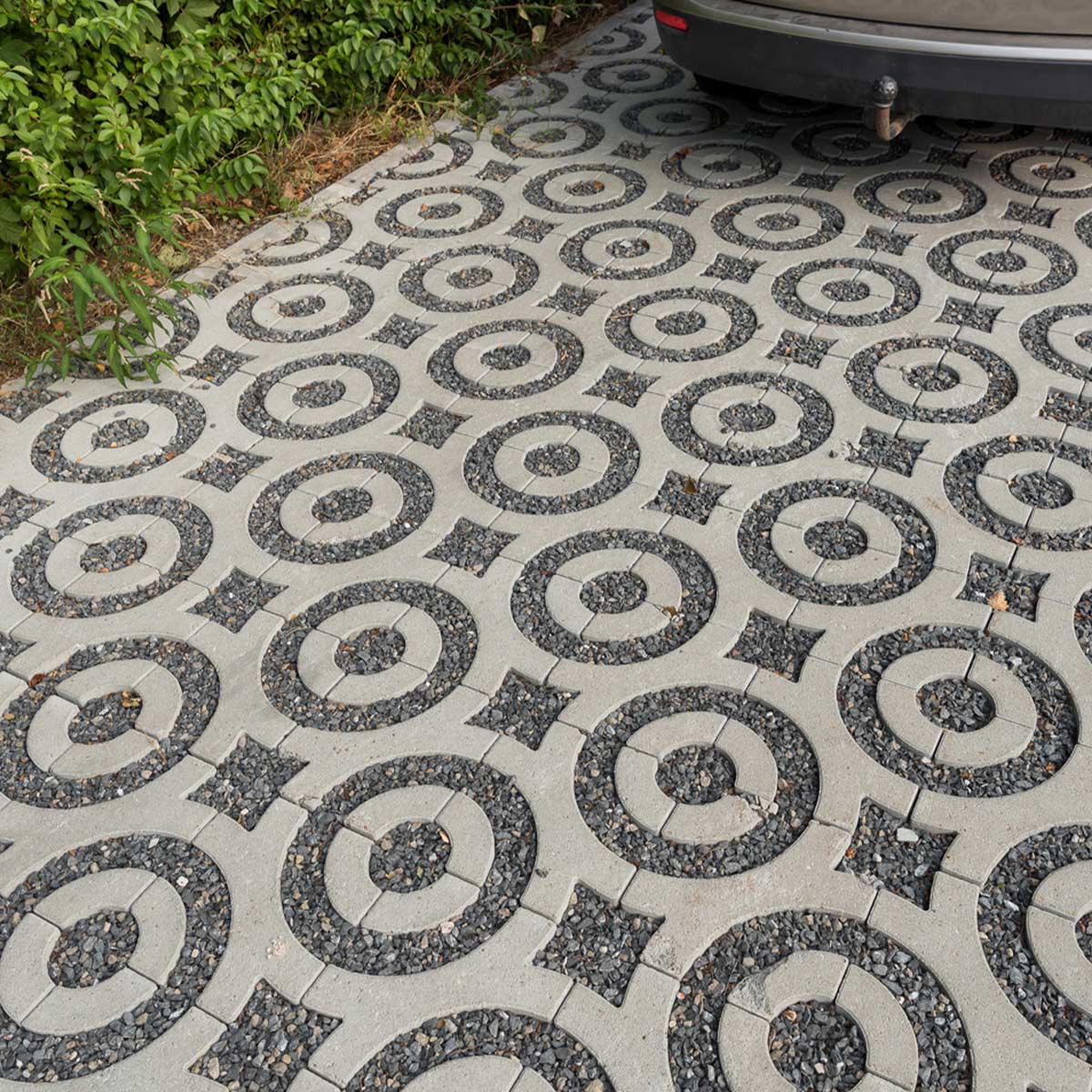
Permeable Gravel Driveway
Gravel driveways are an excellent option for meeting the permeable surface requirements of the UK Sustainable Drainage Systems (SuDS) regulations. Their loose, porous structure allows rainwater to infiltrate the ground, reducing surface runoff and supporting natural drainage. To comply fully, they are often installed with a permeable sub-base (MOT Type 3 SHW clause 805) to enhance water management and prevent flooding. Gravel driveways are cost-effective, visually appealing, and environmentally friendly, making them a practical choice for properties aiming to align with SuDS guidelines.

Non-Permeable Paving Solutions
Where you want to use non-permeable paving materials for your driveway, you will need to manage rainwater / run-off in a way that captures the water within your property.
Where possible we would recommend simply allowing the water to run-off into a soak-away area (lawn, flower beds, gravel trap or swale) as this will prove the most cost-effective.
Driveway Slopes and Gradients
Driveways are rarely entirely flat, with slopes and gradients often being necessary near the entrance to achieve street level.
If you want to use your lawn, flowerbeds or borders to capture rainwater run-off from your driveway, you will need to ensure the driveway paving has the right gradient angle (fall) so the water drains properly towards the soak-away area.
To calculate the fall (the gentle slope or gradient which will be applied to the driveway paving) you will need a gradient of at least 80:1 drop per metre in the direction you want the paving to drain. This equates to 12.5mm drop per meter. So if your driveway is draining to a lawn on the side and is 4-metres wide, then the fall would need to be 50mm (4 x 12.5mm) from one side to the other of the driveway.
If the paving blocks have a rougher surface that is less likely to easily drain, a fall of 60:1 (16.66mm per metre) should be used.
Fall – You’ll need to excavate the ground to allow for the fall/gradient needed for your drainage plan (e.g. the substrate will typically be 12.5mm lower per meter of paving run on the side where you want water to drain toward).
Garden Capture – Gravel Trap Soak-Away Area
Using the existing borders with a permeable cover material such as a washed decorative aggregate or gravel is a simple and efficient way to provide garden capture for run-off rainfall from your driveway.
Your drainage plan will need to ensure the driveway’s fall/gradient is sloping down towards the capture area, so the rain water runs into the gravel trap.
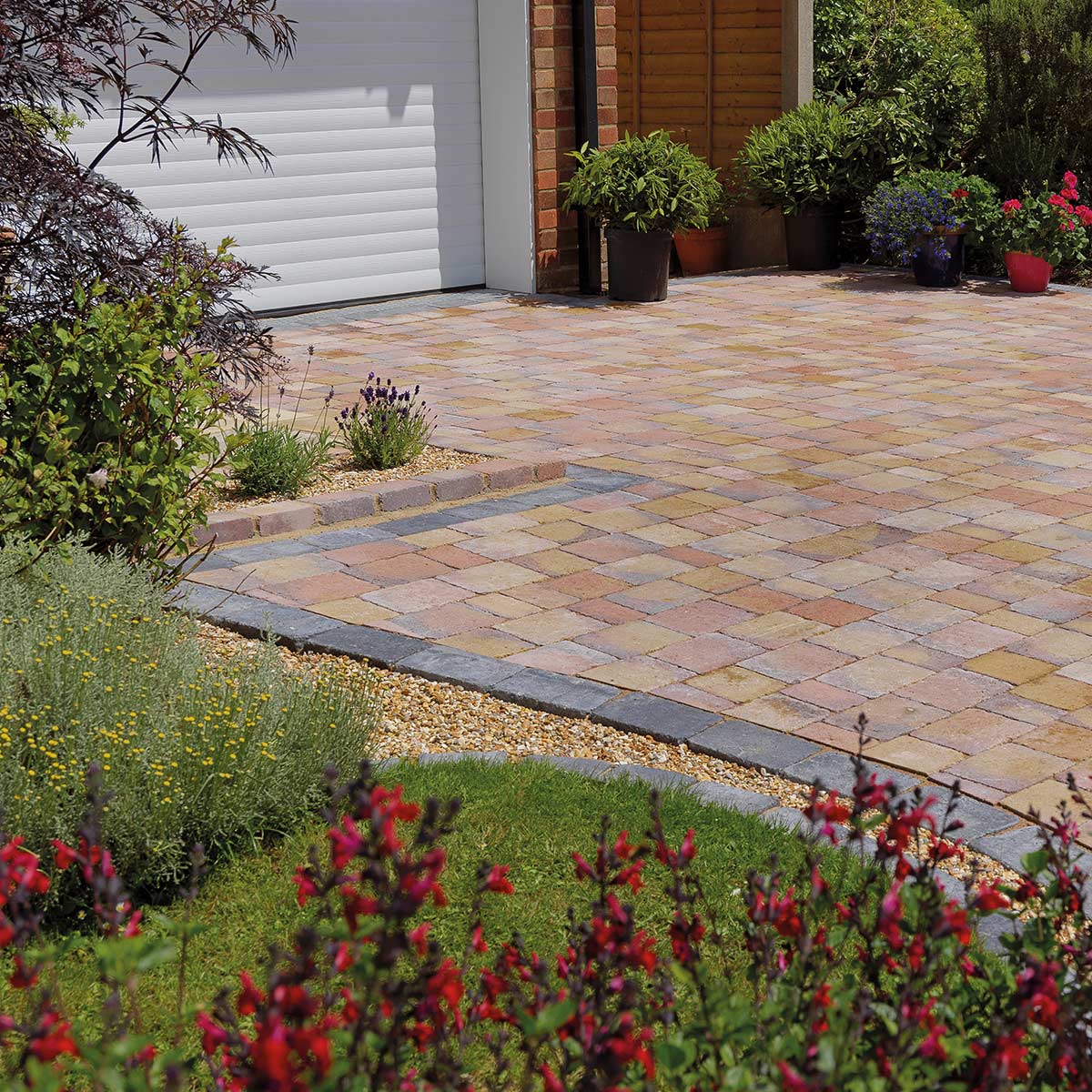
Garden Capture – Lawn Soak-Away Area
Lawns are permeable and will be able to handle significant amounts of run-off water. This make them ideal as a low-cost solution as part of your driveway drainage plan.
The main issue with lawn soak-away solutions is one of topography – is the lawn able to be positioned downhill from the driveway so there is a fall towards the lawn?
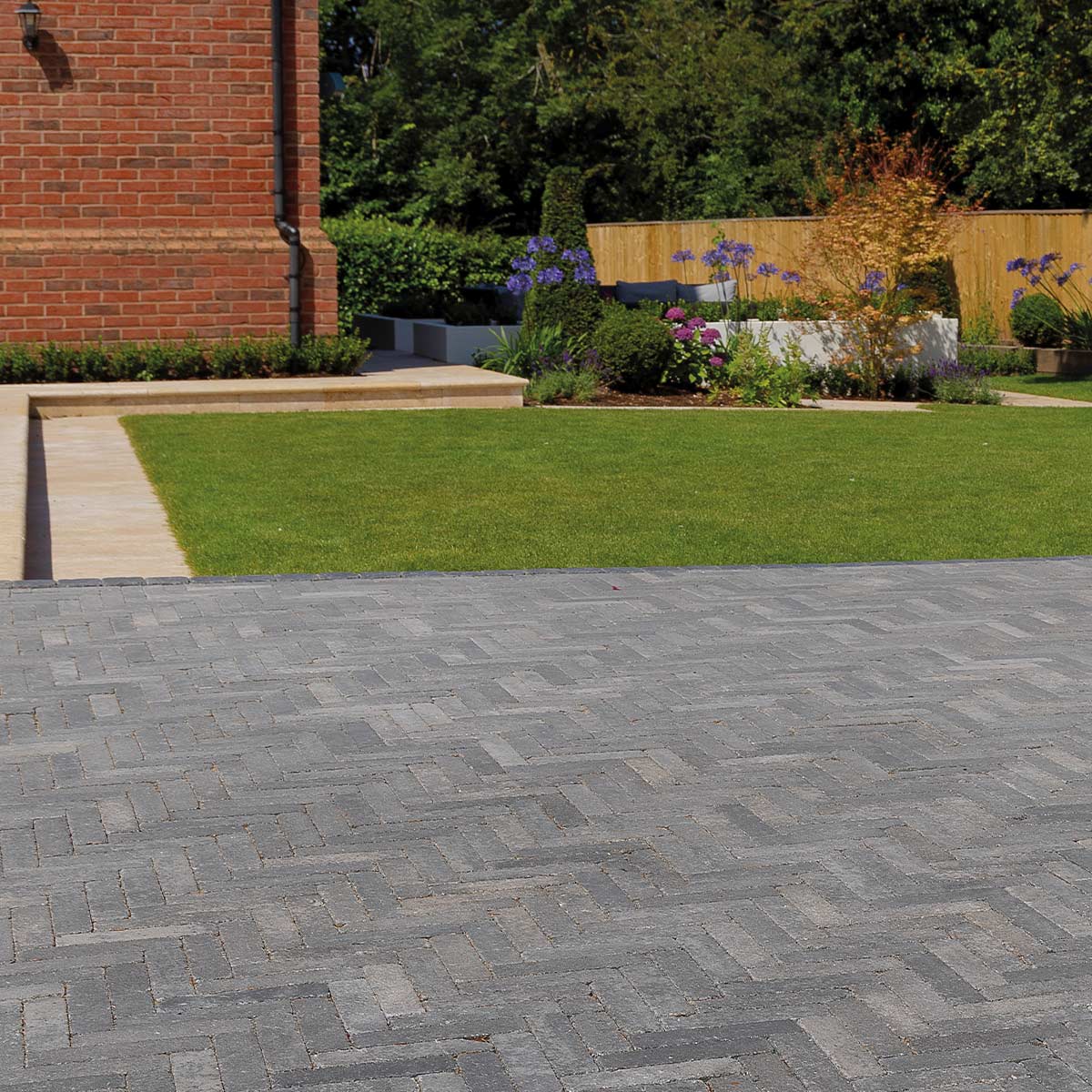
Groundwork for Underground Soak-away Solutions
When using channel drains, slot drains and other underground drainage connected to soak-away crate, you will need to excavate the necessary hole for the soak-away crate and connecting trenches for the drains and P-trap gully.
The hole for soak-away crate should have approximately 200 mm space between the sides and the crate. You will fill this space with shingle (or a suitable washed aggregate) once you’ve wrapped the crate in geotextile membrane (to prevent soil fines and gravel entering the crate). The hole should be deep enough for the height of the crate, plus 200 mm top and bottom for shingle infill, plus the 200-300 mm of topsoil, on top of the infill aggregate.
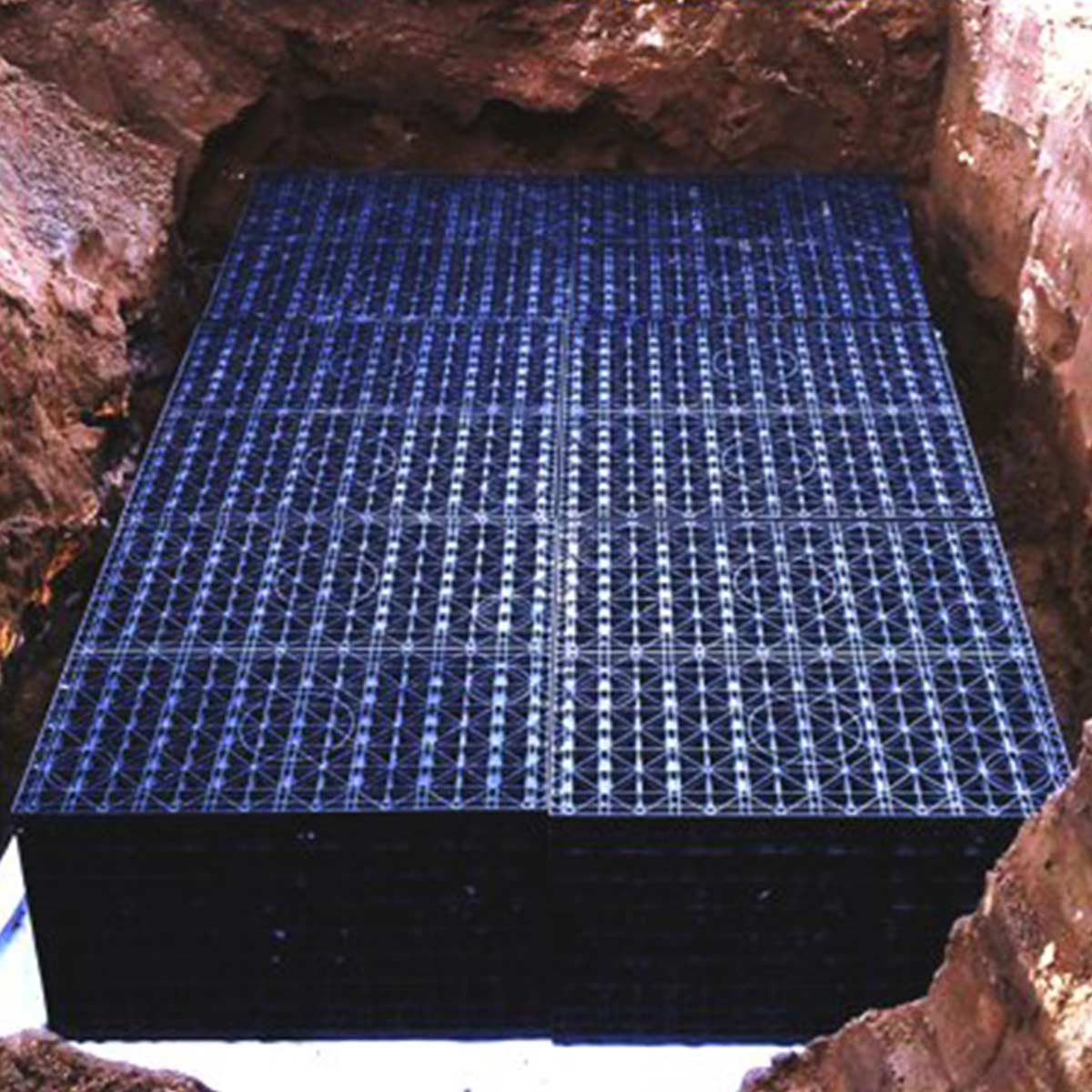
What Size Does The Soak-Away Crate Need To Be?
If you are using underground soak-away crates to capture rain water run-off from your drive, you will need 1m³ of crates for every 50m² of driveway.
- 1m³ of soak-away crates for every 50m² of driveway
You will also need to consider where your roof/downpipes drain and whether these will contribute to the driveway’s run-off water capture too?
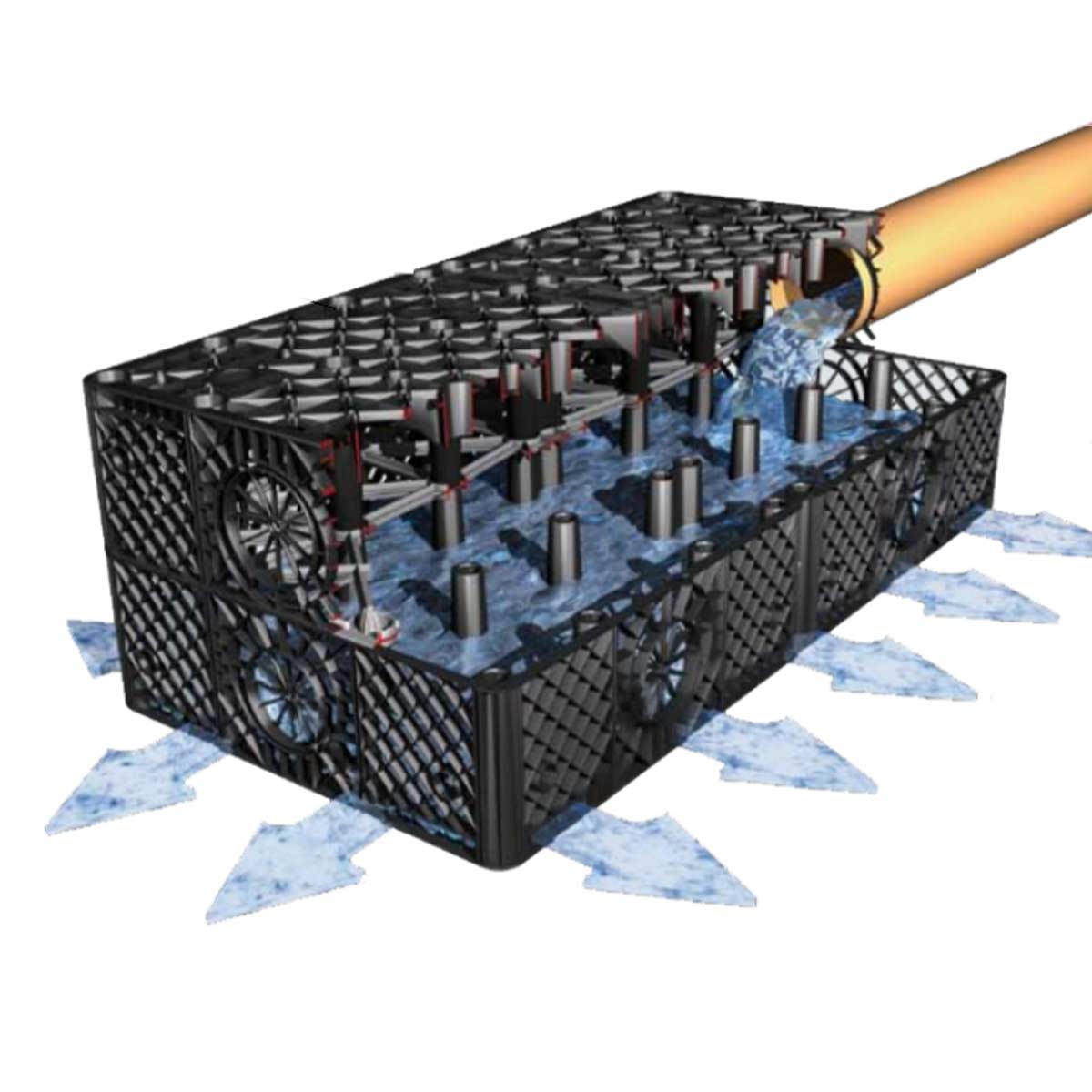
Traditional Hinged Gully Drain
A traditional hinged gully drain is a robust drainage system designed to manage surface water effectively. It features a durable hinged grating that allows easy access for maintenance, while securely fixed to prevent displacement. These drains are typically made from cast iron or galvanized steel, ensuring longevity and resistance to wear.
Usually these are connected to a P-trap gully to ensure debris and silt are not washed down into underground soak-away crates.
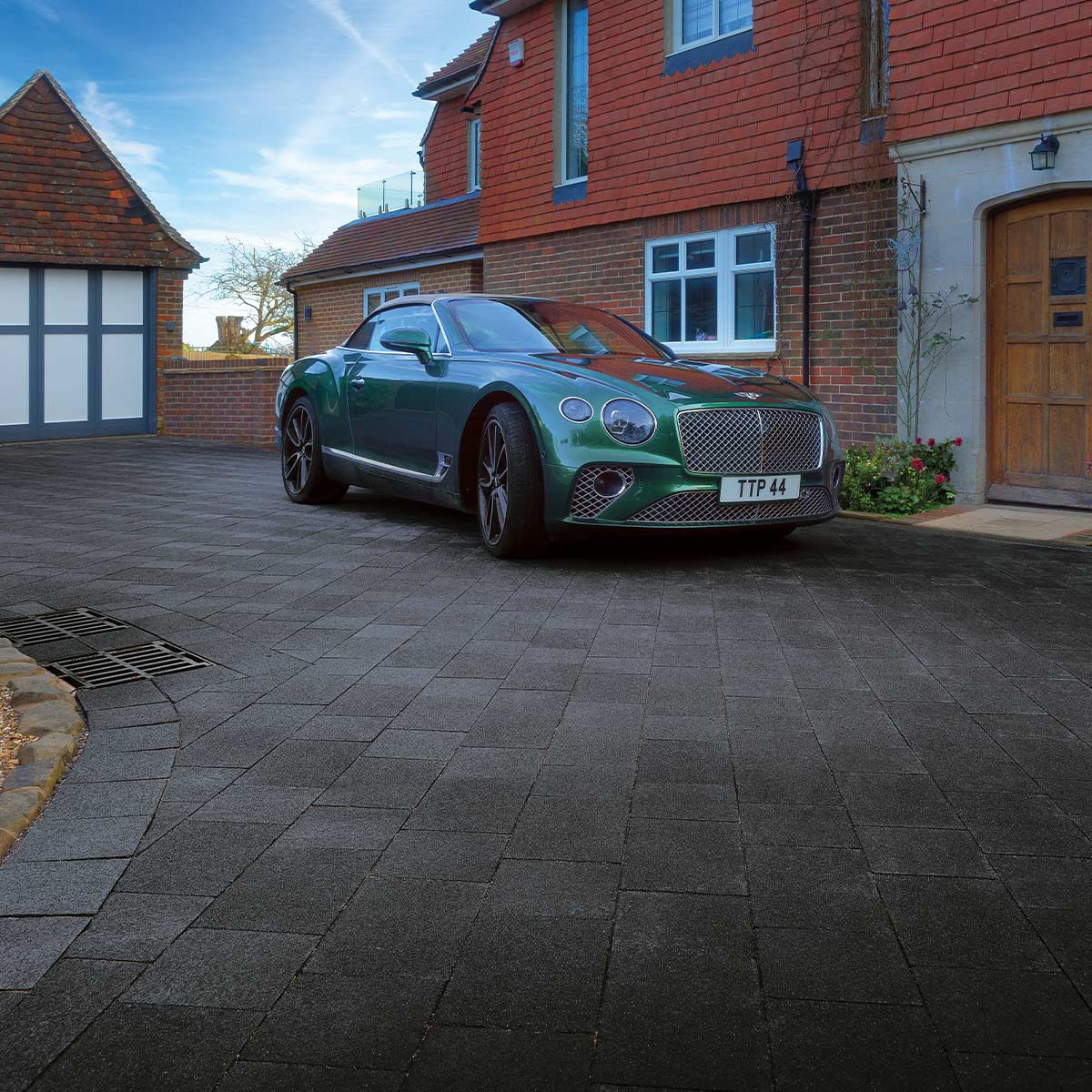
P-Trap Gully
Ideally, the P-trap gully should be located at the point between the drainage channel and underground pipes. This will allow it to capture silt and detritus washed from the driveway surface, and prevent this being washed into your soak-away crate. The P-trap gully will also prevent odours and gases coming back up the pipes from the soak-away and escaping.
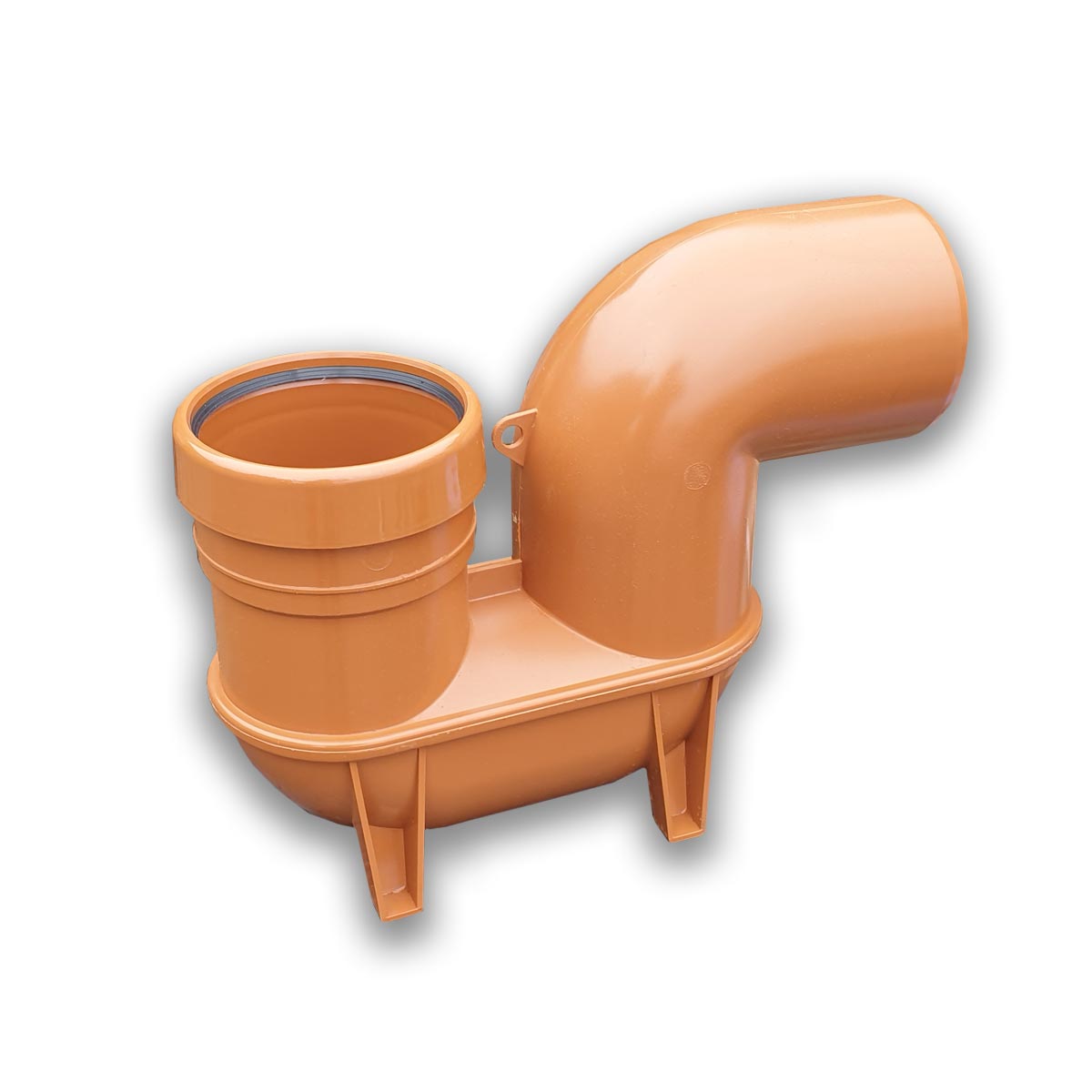
Metal Slot Drain
A stainless steel slot drain is a sleek and efficient drainage solution, ideal for domestic driveways. Designed with a narrow, discreet opening, it seamlessly integrates into paved or concrete surfaces without compromising aesthetics. Made from high-grade stainless steel, it offers excellent durability, corrosion resistance, and low maintenance. This drain effectively channels surface water into the drainage system, preventing pooling and ensuring a safe, dry driveway. Its robust construction and modern design make it perfect for contemporary homes.
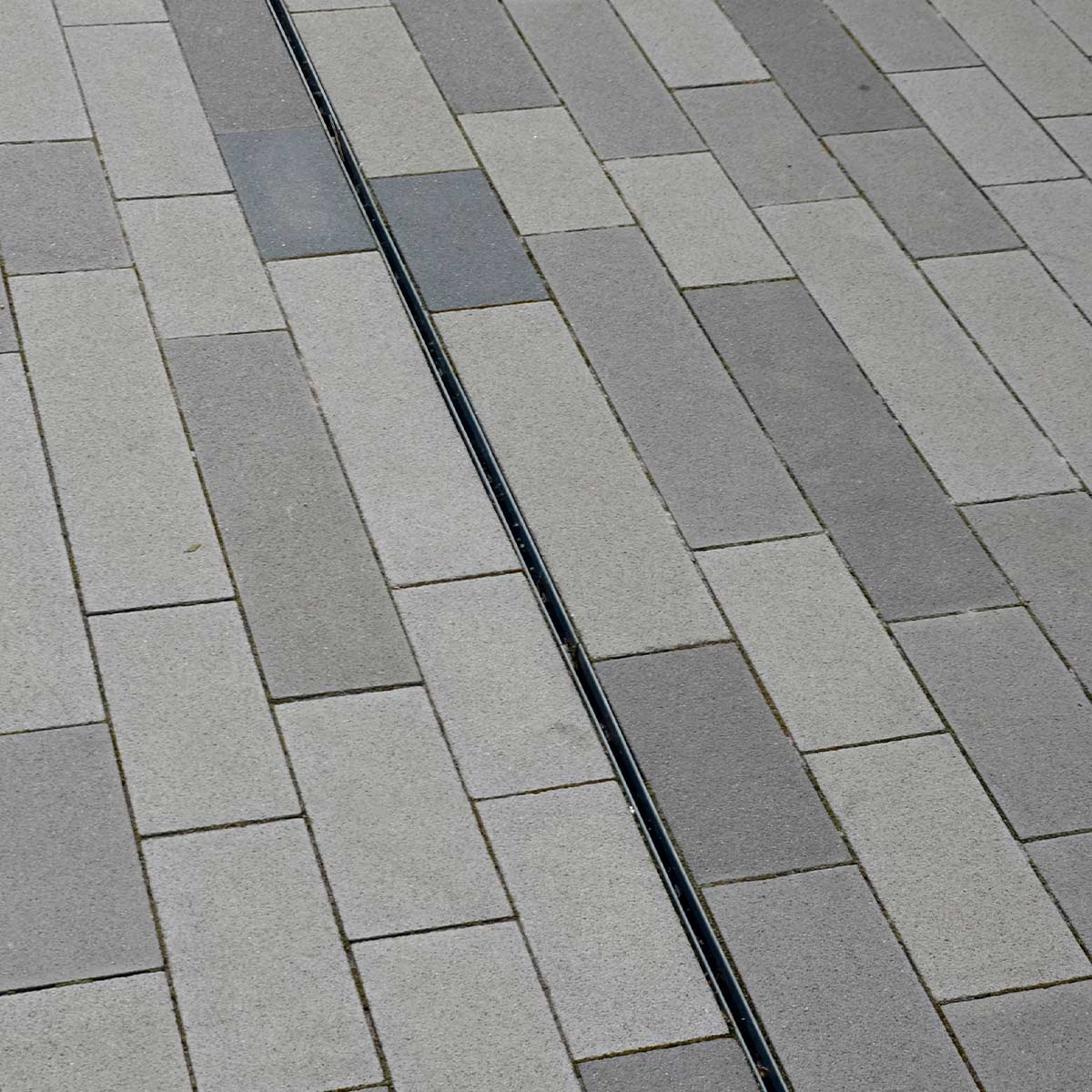
Plastic Channel Drains (A15)
A plastic channel drain rated A15 is a lightweight yet durable drainage system, perfect for domestic driveways with pedestrian and light vehicular traffic. Made from high-quality, UV-resistant plastic, it resists weathering and corrosion for long-lasting performance. The A15 load rating ensures it can handle weights up to 1.5 tonnes, making it suitable for cars. Easy to install and maintain, this channel efficiently directs surface water away from driveways, preventing flooding and preserving the integrity of the paved surface.
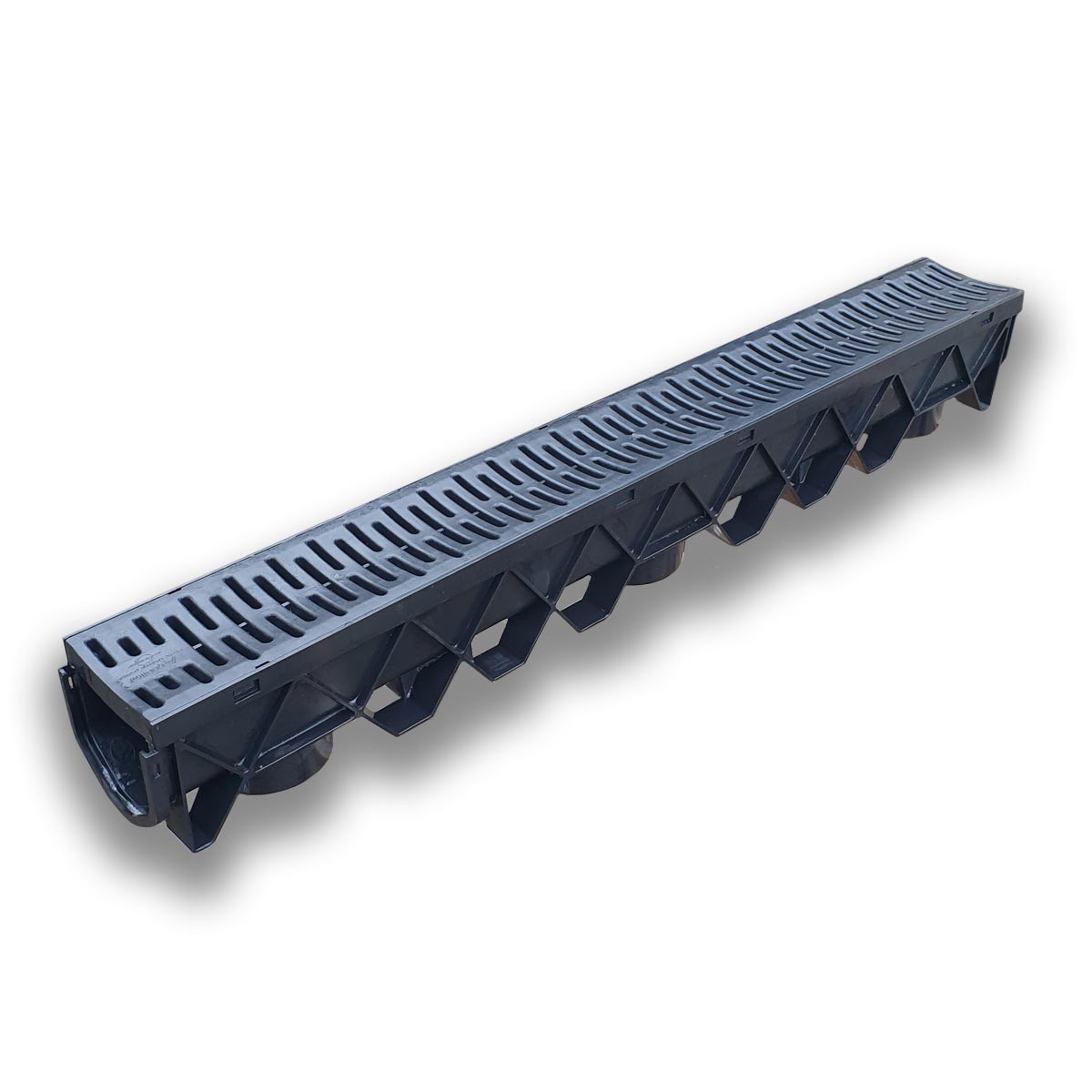
Metal Channel Drain (B125)
A metal channel drain rated B125 is a robust drainage solution designed for driveways with moderate vehicular traffic. Constructed from durable materials like ductile iron or galvanized steel, it withstands loads up to 12.5 tonnes, making it ideal for cars, vans, and light commercial vehicles. The channel efficiently collects and redirects surface water, preventing flooding and water damage. Its sturdy design ensures long-term reliability, while its grating provides a safe, anti-slip surface for both vehicles and pedestrians.
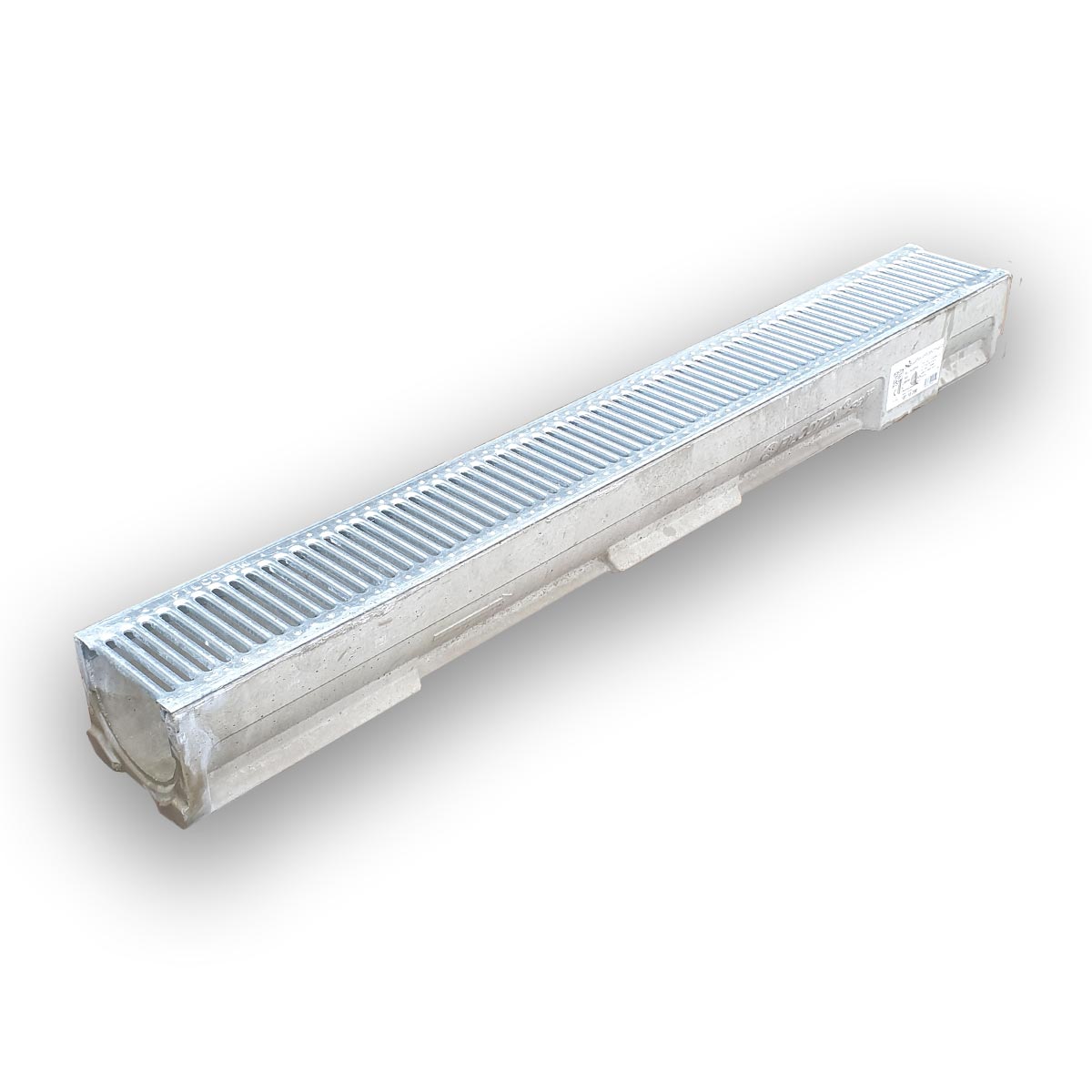
Pre-Cast Concrete Slot Drain
A pre-cast concrete slot drain is a durable and efficient drainage solution, seamlessly combining kerbing and water management for driveways. Made from high-strength concrete, it offers excellent resistance to heavy loads and weathering. Its discreet slot design channels surface water efficiently into the drainage system, preventing pooling and protecting the driveway. Ideal for residential or light commercial use, it blends functionality with aesthetics, maintaining a clean, streamlined appearance while ensuring effective surface water control and long-lasting performance.
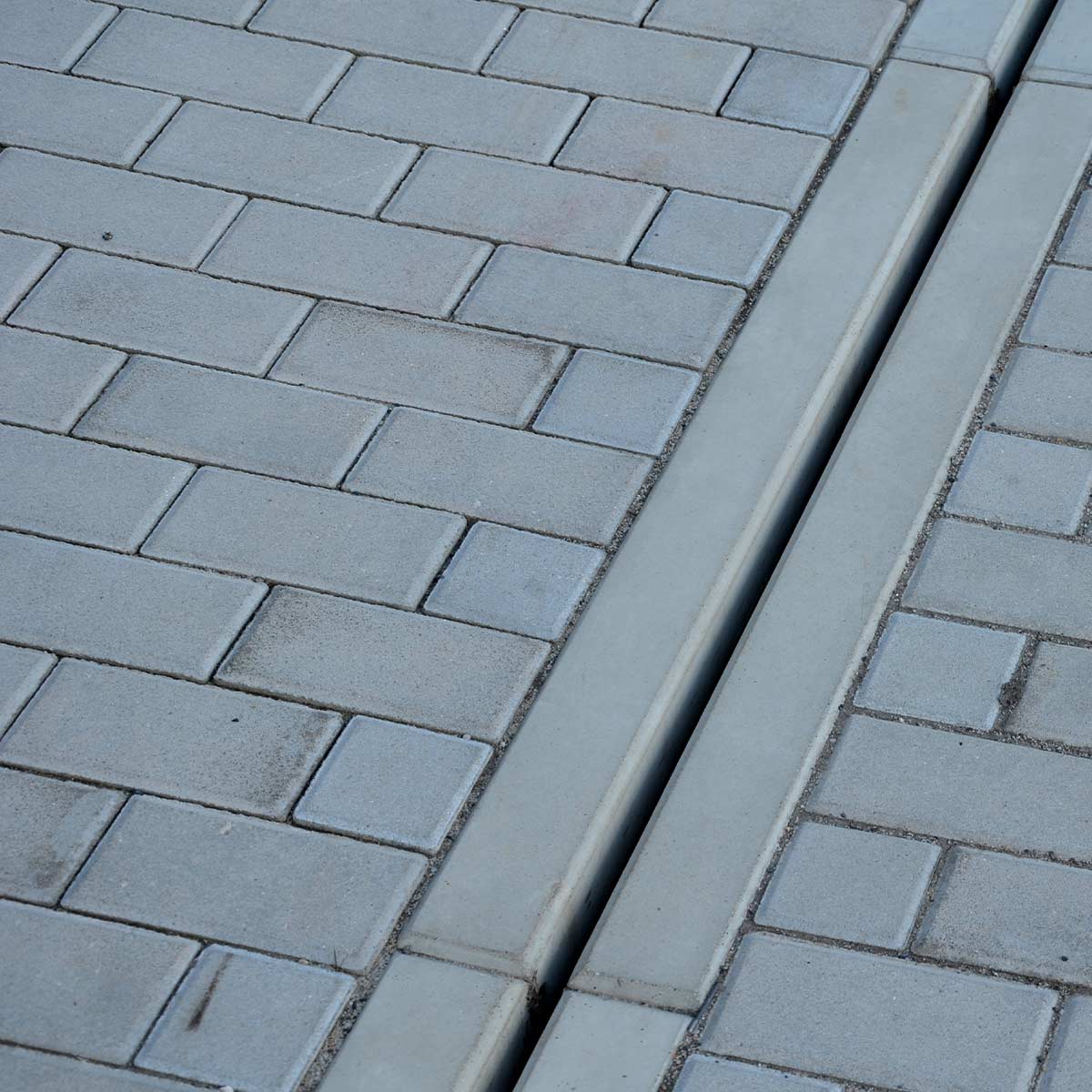
SUDs Regulations for Homeowners
As stated above, in simple terms the rules are as follows:
If your new driveway or front garden paving exceeds 5m² in area, you will require a drainage solution to make sure all run-off water is captured on your property.
If you cannot capture the water within the boundary of the property, and the surface area is greater than 5m², you will need planning permission for your driveway area.
Best Practices for Homeowners
Regardless of where you live in the UK, here are some universal tips to stay compliant with SUDs law:
- Incorporate Drainage Solutions: Install soak-aways, rain gardens, or channels to direct water to permeable areas.
- Choose Permeable Materials: Gravel, porous asphalt, and permeable block paving are excellent choices.
- Consult Your Local Authority: Always check with your local council to ensure your plans comply with the latest regulations.
- Think Environmentally: Consider green options, such as planting vegetation or using rainwater harvesting systems, to manage water sustainably.

Rules in England
In England, the rules for driveways and patios focus on whether surface water will drain naturally or require additional measures. If you’re planning to pave over your front garden or driveway, you’ll need to consider the following:
- Permitted Development Rights: You can pave over an area less than 5 square metres without planning permission, regardless of the material used.
- Porous Materials: If you use porous materials like gravel, permeable concrete, or porous asphalt, you’re exempt from needing planning permission.
- Drainage Solutions: For impermeable surfaces, such as concrete block paving, cobblestone paving, concrete or tarmac, you’ll need to direct rainwater to a permeable soak-away area or install drainage systems, such as underground soak-away crates. Planning permission is required if no such measures are in place and water cannot be capture within the bounds of the property.
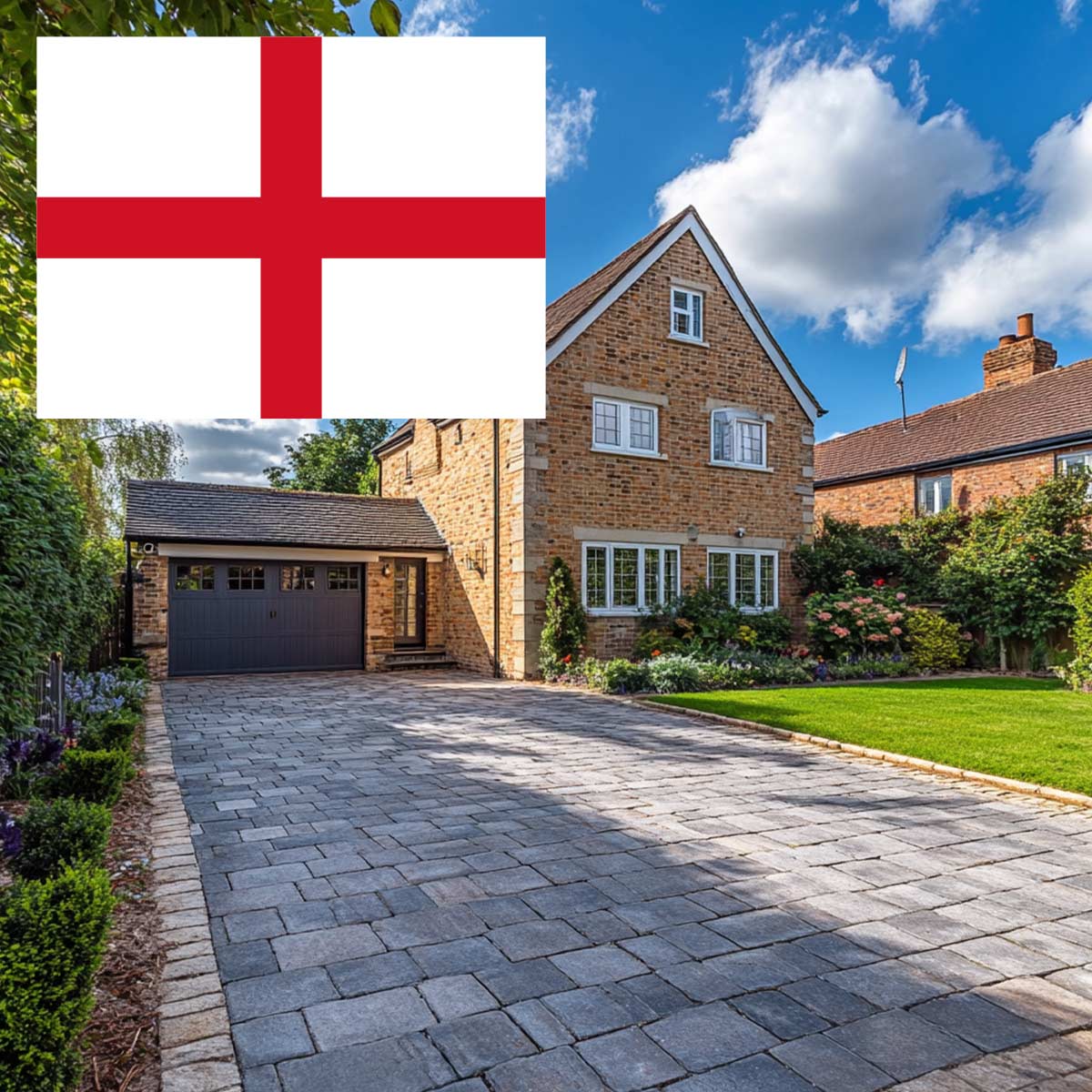
Rules in Wales
The regulations in Wales are similar to England, but with a stronger emphasis on managing surface water through SUDs. Since January 2019, all new developments of more than one house or where the construction area is 100 square metres or more must include SUDs features.
Key points include:
- New driveways and patios under these thresholds generally follow the same rules as England.
- Local authorities in Wales have specific SUDs approval bodies (SABs) to oversee larger developments, ensuring compliance with sustainable drainage principles.

Rules in Scotland
Scotland’s approach to SUDs is governed by the Water Environment (Controlled Activities) (Scotland) Regulations. These regulations require all new developments, regardless of size, to include sustainable drainage measures.
For domestic properties:
- Planning Permission: Any new impermeable surface, such as a driveway or patio, must include drainage solutions to prevent water run-off.
- Porous Alternatives: Using permeable materials can help avoid the need for additional drainage installations.
- Guidance: SEPA (Scottish Environment Protection Agency) provides specific guidance for homeowners, ensuring compliance with drainage requirements.

Rules in Northern Ireland
In Northern Ireland, the rules are less prescriptive but still encourage sustainable water management. The Department for Infrastructure outlines the importance of avoiding water run-off from new surfaces.
Key considerations include:
- Planning Permission: Required if you’re paving over a front garden with impermeable materials and no provision for drainage is made.
- Porous Materials: If you use porous materials like gravel, permeable concrete, or porous asphalt, you’re exempt from needing planning permission.
- Permeable Materials: Encouraged to minimize the environmental impact.
- Local Guidance: Councils provide advice on best practices for driveway and patio installations.
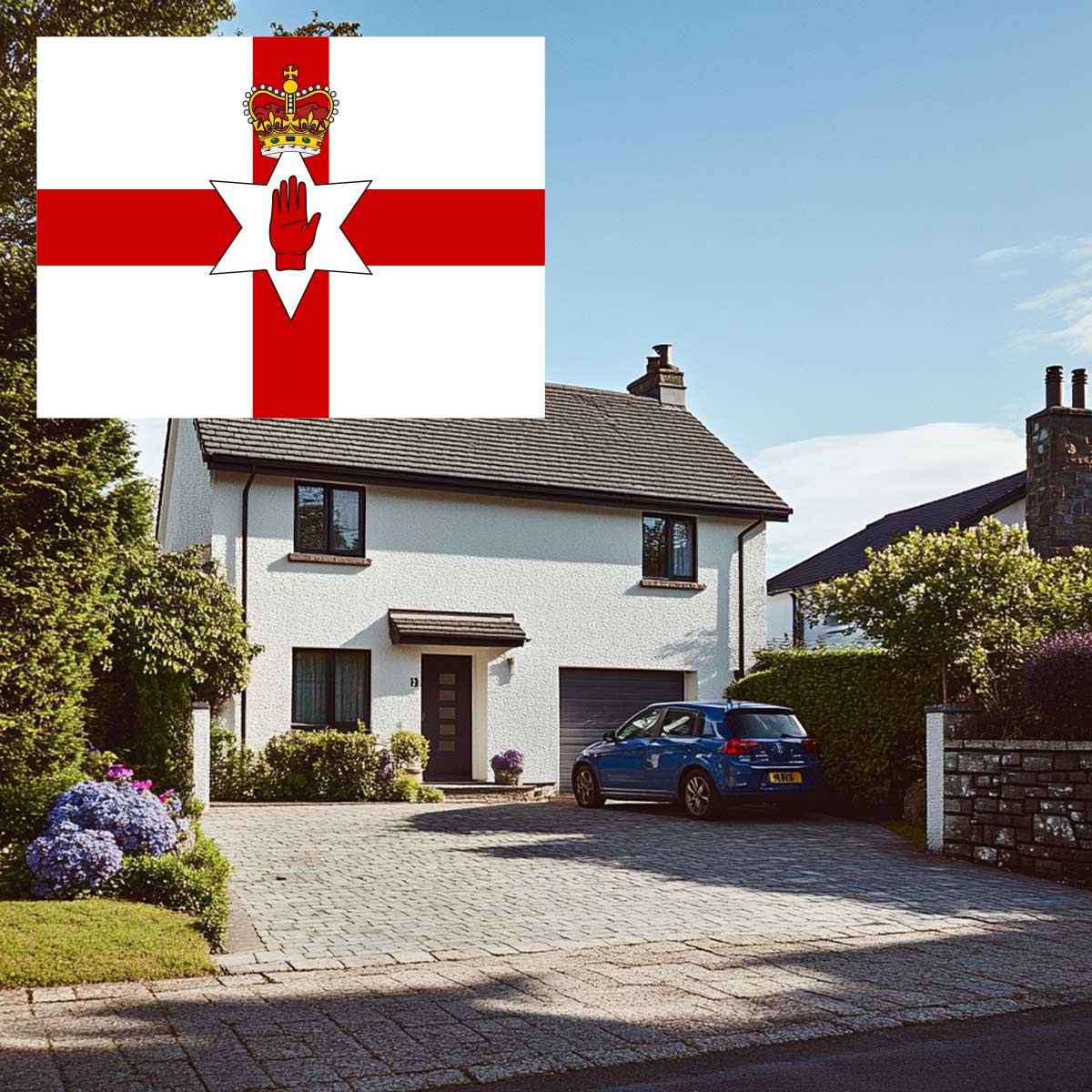

 Free Delivery Available – 24 Hour Despatch
Free Delivery Available – 24 Hour Despatch


